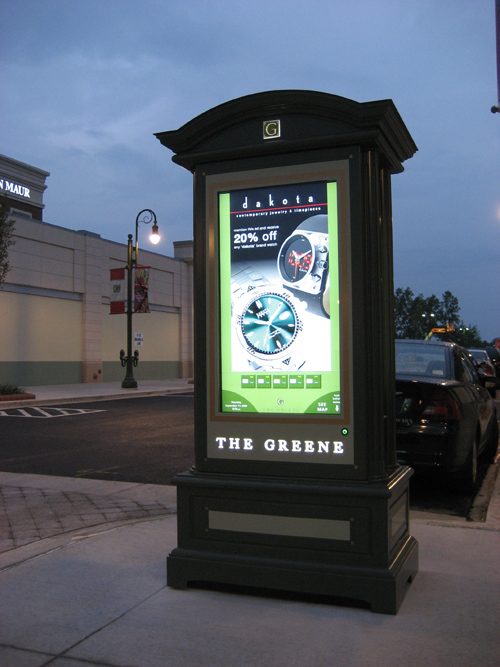Brian Rhatigan, Almo Professional A/V
I am still trying to find a city that offers a consistent 70-degree dehumidified environment year round to live in– but that sounds more like wishful thinking. Outside temperature is definitely at the top of the list when planning for an outdoor display. A typical operating temperature range of a flat panel is between 32 degrees and 104 degrees Fahrenheit. Being that high temperatures impede electronic operation and extreme hot and cold will reduce the life of electronic components, special care needs to be taken to overcome one of the biggest contributors to electronics failure.
Moisture, not only from rain, but also from condensation is an inherent challenge when deciding to use a display outdoors. It’s a pretty safe bet that any type of electronics will not continue to operate for very long when moisture is introduced. Besides the high risk of an electrical short, corrosion on the boards and components is inevitable. Add to this that rapid temperature changes can cause condensation on the glass surface drastically reducing the effectiveness of whatever messaging is on that screen.
Unlike temperature and humidity/moisture, there is rarely a value listed on a flat panel spec sheet that describes a display’s resilience to dust and debris. However, that does not mean that it is not a concern. Since heat is usually considered the number one enemy of any electronic component’s performance, every display will have some method of dissipating that heat generated during its normal operation. This is often accomplished with fans and vents. But this becomes a two way street, allowing for dirt and debris to come inside the display and land on the electronics.

There are only two ways to address outdoor issues– either using an outdoor rated display that would have a typical operating range of -40 degrees to 122 degrees Fahrenheit, or using a standard display with an environmental enclosure.
As you can see, there are several factors that need to be addressed when retailers are looking to expand their digital messaging beyond the inside of their store. Perhaps it’s a home/garden/nursery outdoor area of a hardware chain, or maybe a menu board in front of a restaurant, or possibly a display outside a jewelry store with messaging enticing people to come into the store. Regardless of the application, there are only two ways to address outdoor issues– either using an outdoor rated display that would have a typical operating range of -40 degrees to 122 degrees Fahrenheit, or using a standard display with an environmental enclosure.
A true outdoor rated display will take all of the features of a commercial display and “ruggedize” the chassis and enclosure to make the core panel impervious to heat variations as well as humidity and moisture variations. Often an anti-reflective coating will be used on the front glass and weather proofing will be provided for the full enclosure, and of course will include a warranty that will cover the product for use in outdoor environments. Environmental enclosures will address all of these factors but will come in a package separate from the display and are meant to house a traditional commercial display inside.
Currently, outdoor rated displays are available in sizes of up to about 55-inches diagonal, and environmental enclosures are available for slightly larger screens. As demand increases, production of outdoor digital signage will follow suit, as retailers continue looking for different ways to attract customers.Brian Rhatigan is Business Development Manager for Almo Professional A/V. Rhatigan’s specialties include audio, content management, control systems, digital signage, signal distribution and touch/interactive. Prior to his position at Almo, Rhatigan served as Business Development Manager at Electrograph Systems where he handled regional sales in the pro audio, digital signage and video distribution markets. He’s also held sales and account management roles at Electrograph, Sigmet Corporation and Computer Associates. Rhatigan has a Bachelor of Arts degree from State University of New York. He is InfoComm CTS-certified and DSCE-certified.
